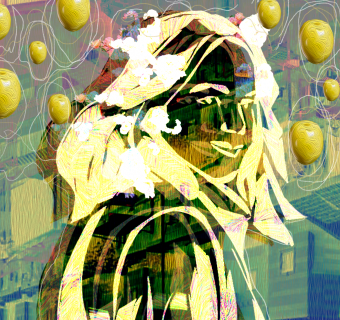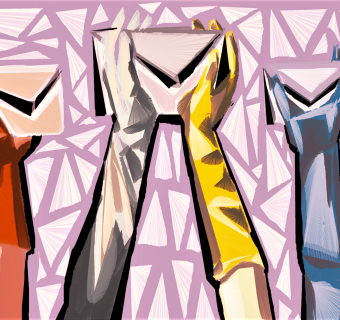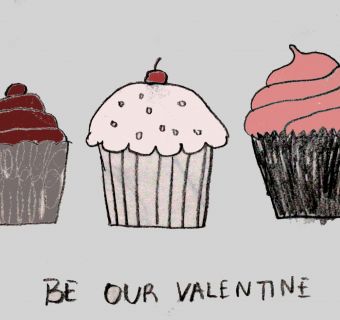There’s a famous scene in the 2006 film The Devil Wears Prada where Meryl Streep’s character, loosely based on the infamous Vogue editor Anna Wintour, goes on a short monologue about how Anne Hathaway’s character is mistaken in her belief that fashion doesn’t matter. You see, even Hathaway’s concerted attempt to “tell the world that you take yourself too seriously to care about what you put on your back” entrenches her in a system and an industry focused on communication through textiles, through the things we put on our backs. A sweater isn’t just blue, it’s cerulean, and it carries with it a story of dozens of people and millions of dollars all employed to put that sweater on clothing racks across the country. We define ourselves by what we wear.
There’s no shortage of labels for styles and aesthetic categories used in the age of TikTok and Tumblr to define ourselves in contrast to one another. From cottagecore to preps, from punk to scene, subcategories of subcategories and everything in between, there is a desire to define oneself in communication with trends and communities. Labels can be effective tools for finding such communities, but can also be restrictive and isolating when held in too much esteem. This issue, we delve into all the ways we use clothes to communicate.
Jasmine Wang starts this issue by taking us through a diverse array of styles and influences in “UVA’s Style Gallery,” where her several interviews with UVA students act as introductions to all the ways students here on grounds embrace personal style. Cheyenne Butler also explores style in a more comparative fashion as she interviews three friends to compare how they each approach daily fashion, in “3 Women, 3 Styles.” Taking a reflective turn, in “The Age of Exploration: One Indie Girl’s College Metamorphosis” Eryn Rhodes walks us through her own individual journey, moving from her artsy high school friend group to being a college student here at UVA and struggling with that universal desire to fit in.
In “To the Kids Who Wore School Uniforms: What Happened When You Came to College?," Miriella Jiffar interviews UVA students who, like her, suddenly had to develop a signature style, after years of wearing a school uniform. Of course, school uniforms are not the only way society is structured around the way young people are and aren’t allowed to dress themselves. Kiki McLaughlin’s “I Think, Therefore I Am...Who?” considers how parents dress their children, the norms that can be enforced under such a system, and the funny ways these things manifest in real life, like adorable if impractical baby-sized Dr Martin boots. These normative systems influence us even into adulthood, as Bailey Middleton shows in “A Rant About Fast Fashion.” Why, she asks, do we blame everyday consumers for the prevalence of unethical manufacturing practices, rather than holding accountable the craven corporations that perpetuate the problem.
And in this issue we have two equally powerful pieces from Hailey Robbins, on how fashion is used to foster artistic expression. In "A Swiftie’s exploration of Taylorcore” she passionately details how Taylor Swift’s newest album, Midnights, serves as an aesthetic extension of her previous eras. And in “My Drag Queen Superhero: An Interview with Amy L’Amour” Hailey introduces us to Amy L’Amour, a drag queen and treasured friend from Edinburgh. Through this article we get to know how drag and drag fashion allow Amy to express parts of herself she previously felt she had to hide, and how her expression has changed over time.
Thanks to Mary Esselman and Addie Gilligan for their help and compassion in putting this issue together, and to Katie Jane Villanueva for her gorgeous art.









